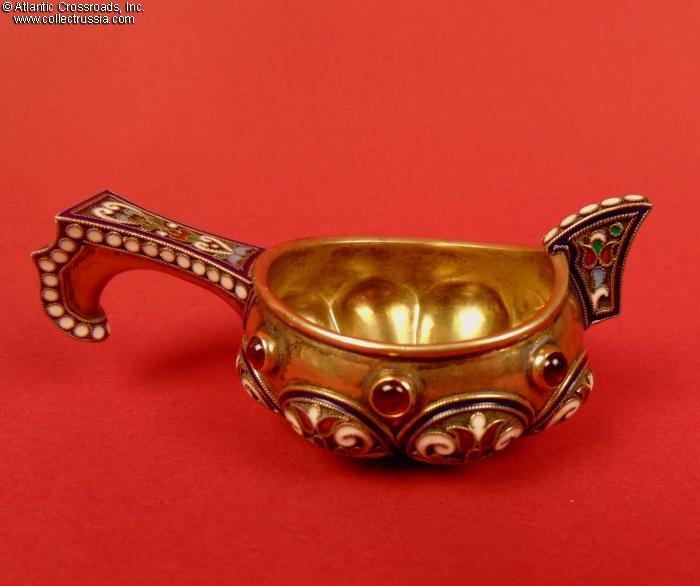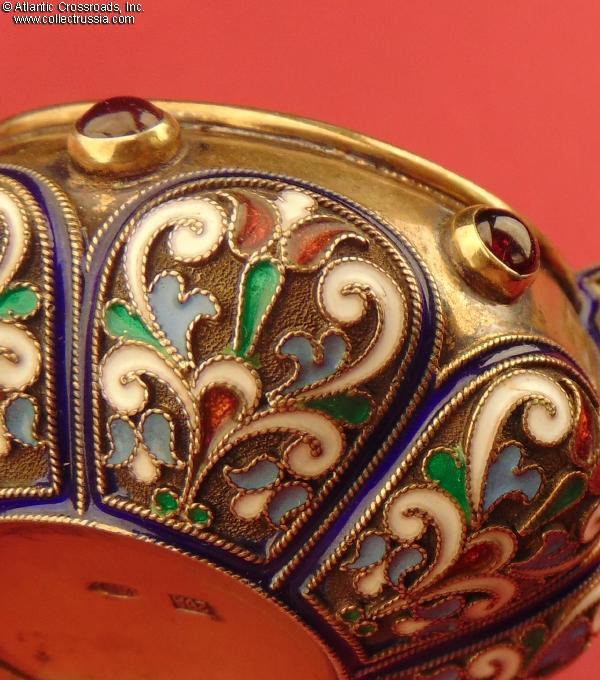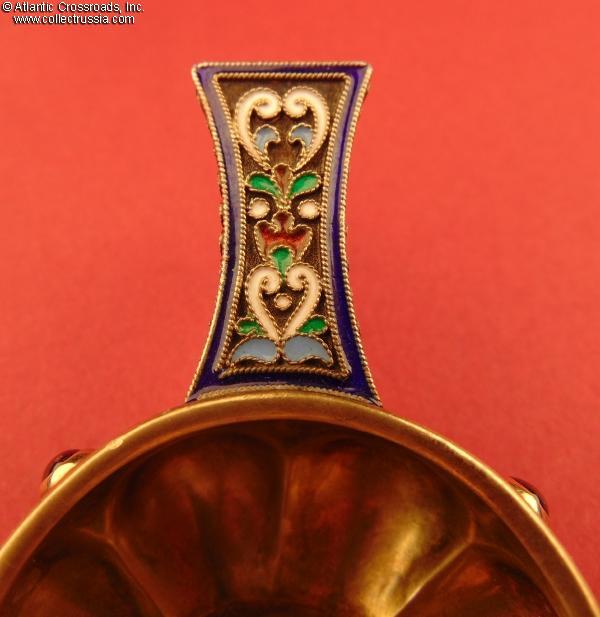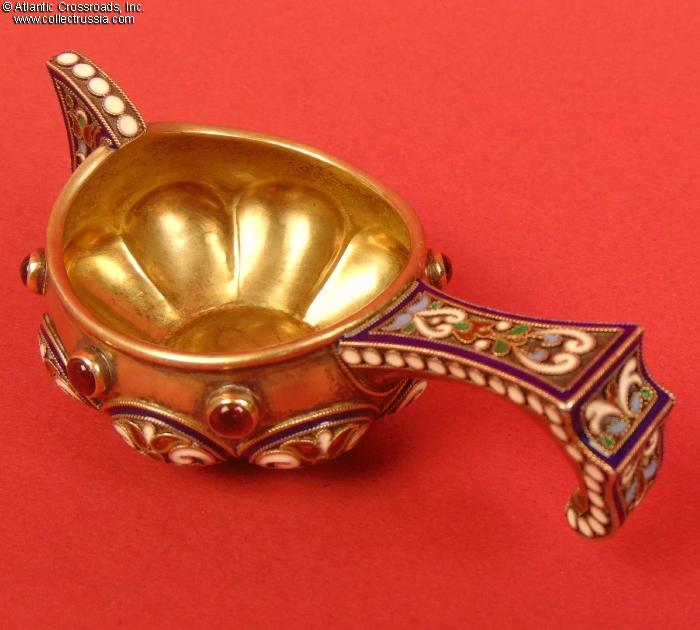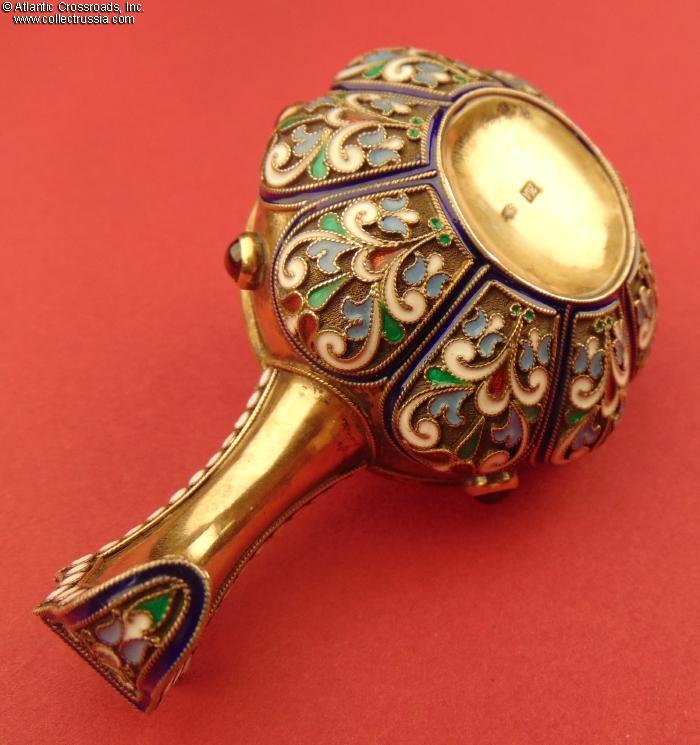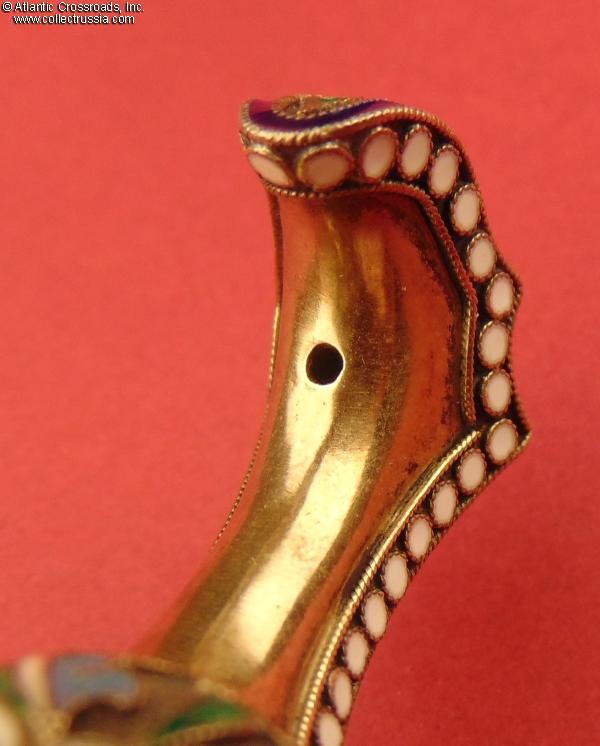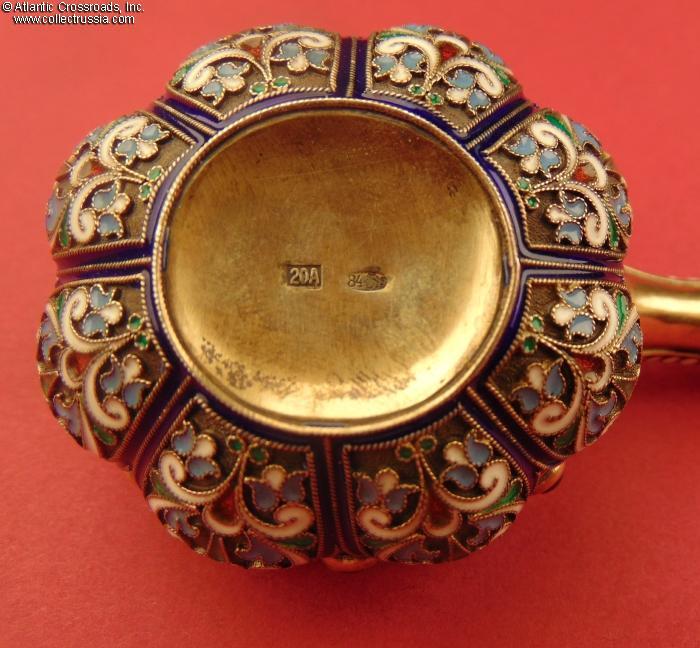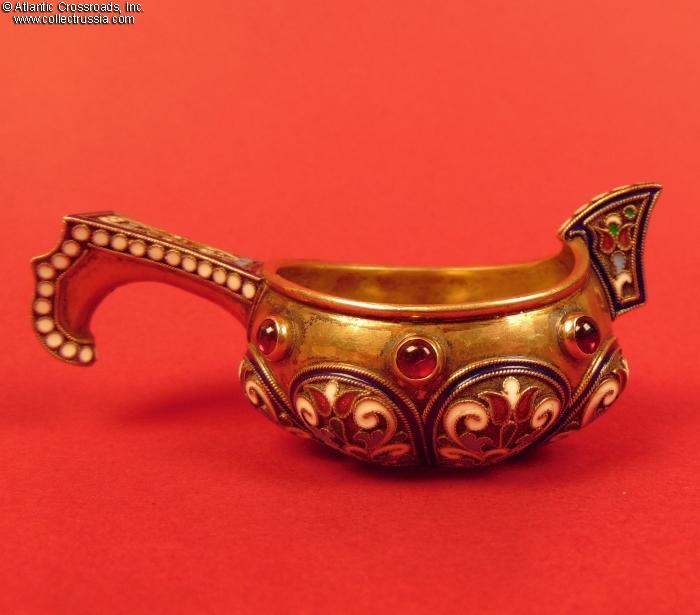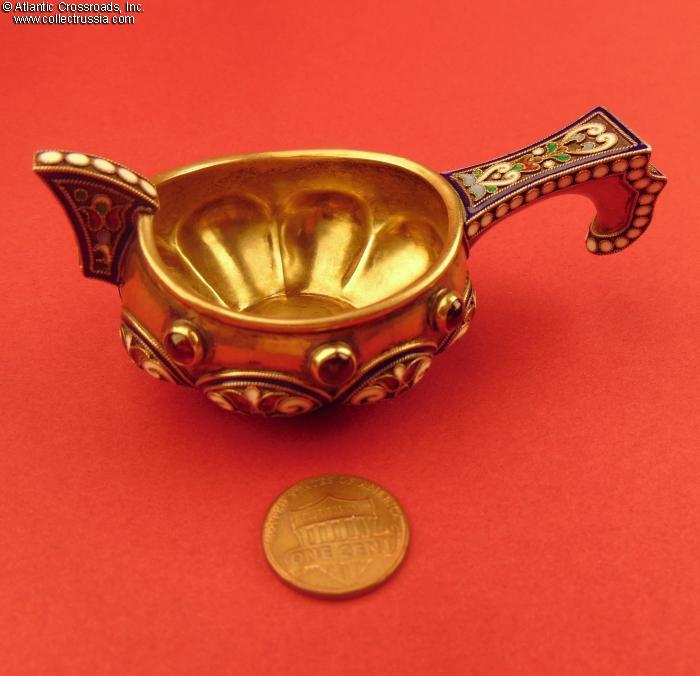
Silver Gilt Kovsh with Cloisonné Enamels and Cabochons, by the 20th Artel, Moscow, 1899-1908.
Measures approx. 87.5 mm in length, 38.6 mm in height at the front tip; weighs 53.7 g. Features a flawlessly executed cloisonne enamel work of five different colors and additionally adorned with six cabochons of what appears to be garnet or other translucent semi-precious stone in maroon. The bottom shows a clearly legible silver hallmark of 1899-1908 style: an "84" silver kokoshnik head oval stamp with the initials ИЛ ("IL") of the assay master Ivan Sergeivitch Lebedkin; there is also the hallmark 20A of the 20th Moscow Jewelers Artel (Cooperative.)
In excellen
Measures approx. 87.5 mm in length, 38.6 mm in height at the front tip; weighs 53.7 g. Features a flawlessly executed cloisonne enamel work of five different colors and additionally adorned with six cabochons of what appears to be garnet or other translucent semi-precious stone in maroon. The bottom shows a clearly legible silver hallmark of 1899-1908 style: an "84" silver kokoshnik head oval stamp with the initials ИЛ ("IL") of the assay master Ivan Sergeivitch Lebedkin; there is also the hallmark 20A of the 20th Moscow Jewelers Artel (Cooperative.)
In excellent condition. The enamel is flawless, which is quite unusual for this type of item: most we've seen exhibit at least some degree of flaking or chips. There are a few contact marks to some of the cabochons, so tiny that they are completely invisible without a loupe and certainly do not affect the appearance of the stones in any way.
A Kovsh was originally a ladle for drinking and the earliest ones were carved out of wood. Over the centuries many began to be made out of metal. By the seventeenth and eighteenth centuries, while some were still used for drinking, the format became quite stylized and very popular for use as an award for faithful service to the tsar or for bravery on the battlefield. (There are several on display in Russian museums today that are so large that it is immediately obvious that they were created purely to be displayed on a sideboard.)
By the early nineteen century, civil merit or military valor began to be far more commonly rewarded by the presentation of a medal or induction into an order. Ancient forms of Russian art, however, were not forgotten but experienced a strong revival in the second half of the century, particularly in Moscow.
While there had always been occasional attempts to create objects that seemed "Russian" in nature, between 1850 and 1900 there was a wildly popular art movement that specifically inspired artists to express themselves in ways that evoked the ancient traditions of Russian folk art. Referred to as the "Russian Style", it saw the production of a vast number of objects that deliberately evoked the Russia that existed before Peter the Great's reforms.
The style was popular all across the nation, but in some areas like Moscow, it influenced artists and jewelers right up to the 1917 revolution. (Any book about Faberge will point out that his firm sold far more objects in the "Russian Style" in its Moscow branch than it did in its St. Petersburg showroom.) Sometimes, the desire to create items for daily use in a Russian folk-art style resulted in products that bordered on the bizarre, like the famous samovar that looks like an overgrown and almost psychedelic rooster! When applied to items like this kovsh that were already uniquely Russian in style, however, the end result was frequently - as here- quite beautiful.
Some of these were manufactured by individual jewelers while the others - in Moscow in particular - were produced by small cooperatives of silver- and goldsmiths known as "Artels". Peculiar to Moscow at least as far as the jewelry business is concerned, the artel was a form of enterprise where several artisans banded together to reduce the costs. Moscow's jewelry artels were generally highly regarded and in some cases, even included former Faberge specialists. Although not bound by any special regulations, the artels typically specialized in a certain area, e.g. fine enamelwork in the case of the 1st and 11th Artel or frames for crystal dishes and carafes for the 4th Artel. Among them, the 20th Artel was particularly well-known for making decorative spoons, kovshes and similar objects of vertu in silver with cloisonné enamels. Most Moscow artels were organized around 1908, although some are known to exist as early as 1905. It is therefore fair to say that although its silver hallmark dates the kovsh offered here anywhere from 1899 - 1908, it was likely made at some point from 1905-08.
This attractive kovsh was never intended for actual use but to be admired as a thing of beauty. Even though some Russian firms produced large kovsh-shaped punch bowls that came with as many enameled cups as the customer wished to buy in order to make a "set", the fact remains that these were produced for show. This is an exceedingly attractive example of pre-Revolutionary art and a particularly nice example of the famous technique of Russian enamel by a well-known and highly respected firm.
Please note that the coin in our photo is for size reference.
$1,900.00 Add to cart

